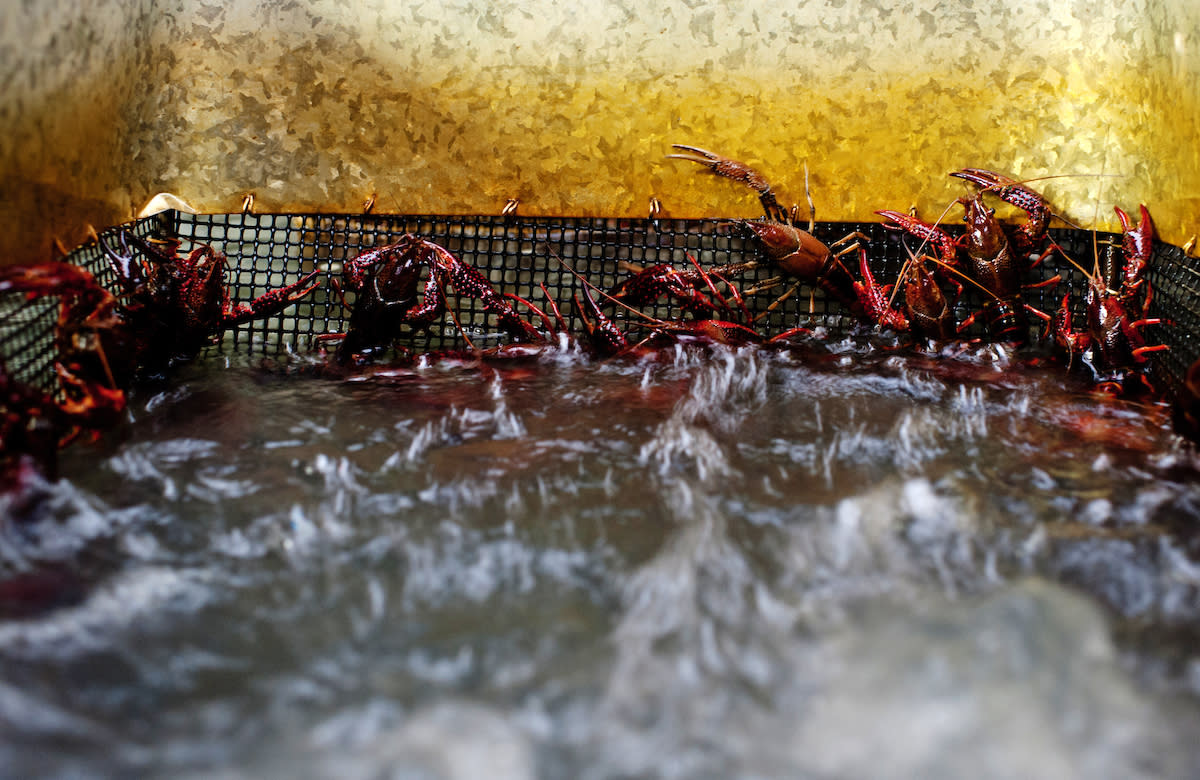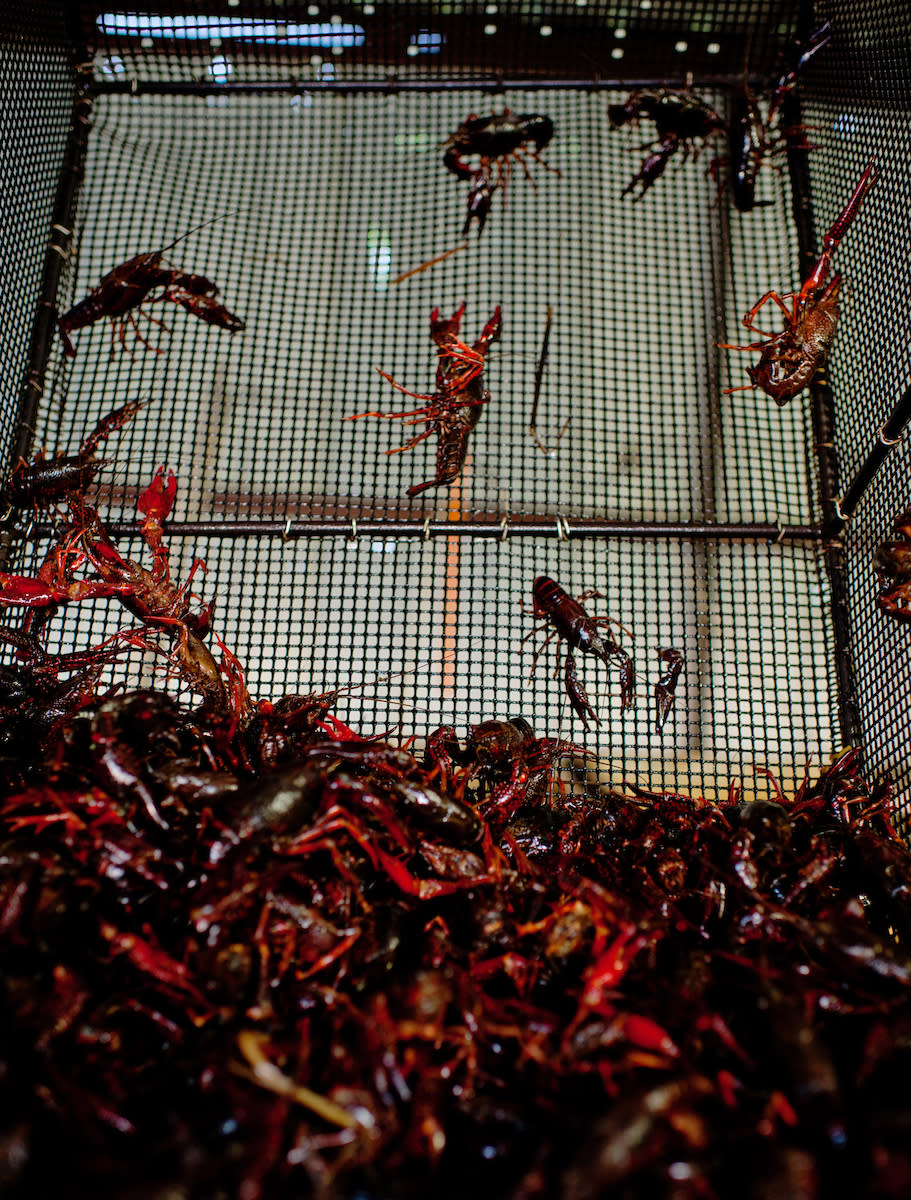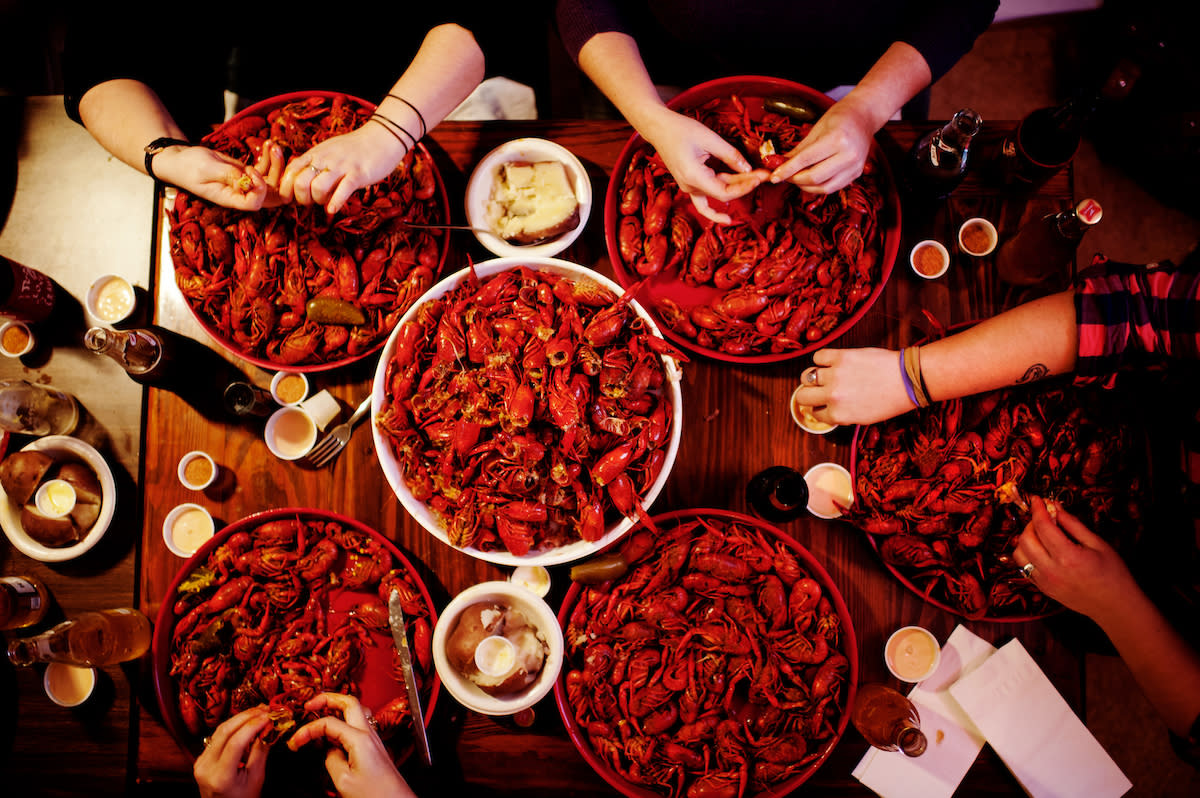Known somewhat lovingly as the mudbug, even by those who devour them by the pound, crawfish have a dirty reputation. As bottom-dwelling, omnivorous, swampy carrion eaters, it’s an understandable description, but it doesn’t seem to discourage the more seasoned crawfish eaters from enjoying every part of the Cajun crustacean.

Still, not everyone can stomach the gritty, swampy flavor from fresh-caught crawfish. Thus, at your average backyard boil, you’ll often find a mass of crawfish soaking in an ice chest full salt and water. Locals call the process “purging”, a home-brewed method for cleaning live crawfish before boiling them alive into a delicious ruby red.

Like most home-remedies though, the efficacy of the procedure is a matter of myth. While many swear by the technique, research conducted by the LSU Agriculture Center demonstrated that the process does little more than remove superficial mud and debris from crawfish shells, and doesn’t really deserve to be called “purging”. The step is still generally recommended as a salt less rinse when boiling at home, so long as the crawfish are exposed to flowing oxygen. Just don’t think of it as a thorough cleanse.

The primary goal of commercial purging is to stimulate an evacuation of the crawfish digestive tracts, ridding the live animals of unsavory internal waste particularly the yellow sandy grit that can make a lot of folks squeamish. Boilers who purge, like Hawk’s in Roberts Cove or Cajun Claws in Abbeville, either soak or spray their hand-selected crawfish in currents of fresh water for up to 48 hours, while depriving them of a food source. The starvation allows the crawfish to cycle through their digestive tracts, eliminating 70% of internal contaminants into the water’s flow. The result is a clean, fresh tasting tail meat, with none of the intestinal mess, and a yellowish rather than green tint to the tail fat. Much more appetizing.

Crawfish, like lobster, crabs, and other crustaceans, are often eaten in their whole form. In boils, they are dropped live in seasoned boiling water, dumped onto picnic tables lined with newspapers, cracked open by diners, and eaten without any butchering or processing. Whatever internal state the crawfish was in prior to its mortal plunge is what ends up in your pile, making purging an attractive option and one that dramatically affects the final presentation and flavor.

Somewhat labor intensive, the process comes at a higher cost, making purged crawfish a more selective product. The cleanse, while thorough, is not a sanitation necessity, only affecting taste and not the edibility of the crawfish. Unpurged crawfish are not any less safe to eat, some just argue that they don’t taste quite as good. Once the crawfish is in the pot, purged or unpurged, how the delicacy is properly seasoned, served, or accompanied is a matter of fierce debate.

